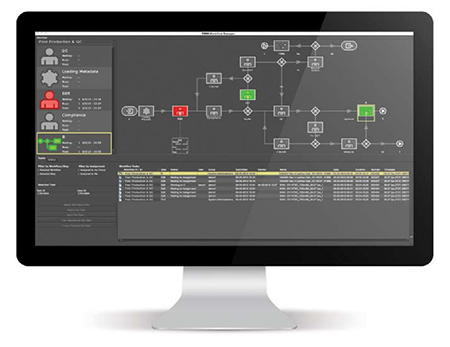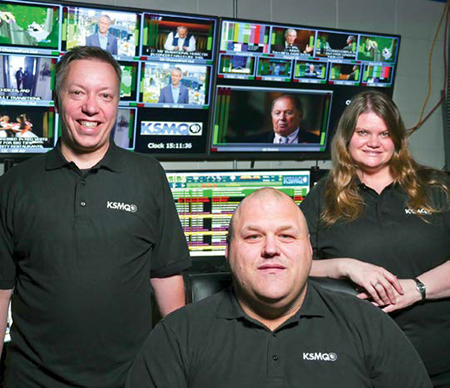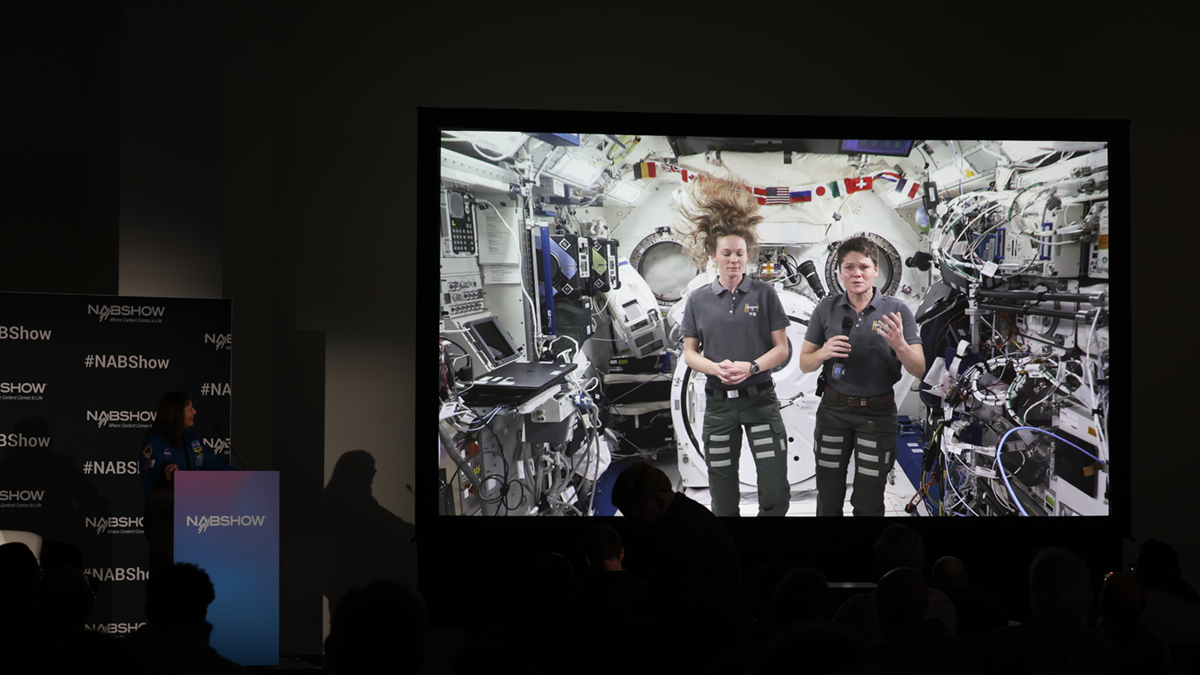Sorting Out Automation’s New Struggle

Primestream Workflow Manager module within the FORK asset management and automation system helps users visualize the steps in a given process.
SAN FRANCISCO—From the beginning, station automation and master control technology has been tasked with taking a series of complex steps and whittling them down to a relatively simple task: making the process of running a station more efficient.
Easily said, tough to accomplish.
“From a workflow standpoint, you have recordings from feeds and files from different sources—and most of the work is juggling these different sources and moving them into a system for playout,” said Fred Fourcher, CEO of Bitcentral, a Newport Beach, Calif.-based provider of broadcast automation systems. “One of the key things in a workflow is [a system’s ability] to handle multiple formats and resolutions, whether you’re dealing with a progressive, interlaced, MXF file or any flavor in between. The key is to be able to play them out and do it elegantly.”
Simpler said than done.
MAKING COMPLEX SIMPLE
In the years since, as station automation became a staple in nearly every broadcast facility, the technology has grown. And with that growth, comes some problems of its own.
“One of the challenges that has arisen with automated production control is that these systems can now do so much; that what was designed to simplify has itself become complex,” said Scott Bowditch, marketing product manager for Ross’ Over-Drive automation system.
Get the TV Tech Newsletter
The professional video industry's #1 source for news, trends and product and tech information. Sign up below.
As more stations began to automate their environments, many actually began losing track of material and workflow improvements. “With the addition of automation, [stations] were losing track of some of these processes,” said Warren Arenstein, senior vice president of business development at Primestream in Miami. “When bottlenecks arose, stations weren’t able to get on top of them as quickly as necessary.”
So what to do, when you have nearly constant growth on one hand and the desire to improve workflow on the other?
Ross is one company that has addressed the complexity issue by integrating a Dashboard control system within OverDrive. Users can build custom GUI control surfaces, which have proven particularly useful in breaking news environments. Likewise, the company’s Workflow Manager helps users visualize the steps in a given automation process. From the different color indicators—if there is indication that system is overloaded—it can be automated to send out an alert.
For Florical, the goal is to eliminate redundant and consistent tasks that don’t require a human decision, according to Shawn Maynard, vice president and general manager of the Gainesville Fla.-based broadcast automation provider. “If you have a TV group that has 50 stations that are bringing in content individually—and the same person is doing the same work in multiple locations—then technology makes it easier to acquire and prep in one location,” he said.
Particularly for a group of TV stations, it makes sense to manage as much as possible centrally and not have too many people managing something that can be prepped once and distributed to all, added Bitcentral’s Fourcher. “That model for management is what we support in central control,” he said. “If you’ve got 30 stations with syndicated programming, you should only prep it once; you don’t need to prep it 20 to 30 times. That’s the goal.
“Our view is that broadcasters should follow the model of ‘prep once, cache at the local station, let it play out,’” he added, while allowing stations to take control of their master control when news breaks.
POOLING RESOURCES

Minnesota PBS station KSMQ-TV recently revamped its automation solution with an NVerzion CLASS system. (L to R) KSMQ Chief Engineer Paul Fisher, Operations Manager Tim Gassmann and Operations Director Michele Hoeper
For Aveco, the automation solution involves jumping in the pool. “For many years we’ve had an advanced workflow scripting capability that has an underpinning of facility management, so that everything is in an ‘equipment pool,’ including combining master control and production automation in the same system,” said Jim O’Brien, vice president of global sales for Aveco in Miami Beach, Fla.
“The improved production value from master control and production automation has been to provide workflow improvements,” he said. “It’s not so much about reducing staff but achieving a more predictable and higher quality on-air product,” he said, pointing to the system’s four-channel video server and 32 layers of real-time graphics.
Aveco’s automation platform has been engineered to potentially include any piece of equipment from the production automation side, including production switchers, video servers and audio boards.
Primestream is addressing the workflow issue with a new Workflow Manager module within the FORK asset management and automation system, which helps visualize the steps in a given process. Customers are also asking for ways to improve remote workflows. The USC Annenberg School of Communications and Journalism uses Primestream Xchange to allow students and teachers to interact over student-created content over a Web interface. “They can look at it online, make subclips, markers and annotate the video, and receive feedback from teachers online,” Arenstein said.
It was the promise of an improved workflow that led Minnesota PBS station KSMQ to adopt NVerzion’s Component Level Automation System Solutions (CLASS) to oversee master control and playout operations as well as speed up station operations. KSMQ uses components that include NControl on-air playlists and NTime event scheduling modules.
From the station’s point of view, there was a budget number to reach and a de sire to do a certain number of automation-related things, according to Mike Schmidt with Heartland Video Systems, the Plymouth, Wis.-based SI for the project. CLASS allows KSMQ to control a variety of third-party equipment, including servers, universal distribution system, VTRs and trafficking system. CLASS helps guarantee the integrity of KSMQ’s on-air presentation by eliminating any single point of failure within the station’s file-based workflow, Schmidt said.
THE EFFECT OF IP ON AUTOMATION
The next step for automation? Diving headlong into the world of IP.
“The next question is determining how master control will interact when it comes to playing out IP,” said Florical’s Maynard. “IP is strong in the production workflow—from cameras to control room to routers—and stations are seeing the opportunities for using off-the-shelf equipment and to increase accessibility to be able to move high-quality video over a WAN.”
What’s tricky for automation in IP is handling ancillary data within automation. “There’s closed captioning data and embedded Nielsen data within an on-air play-out stream that still needs to be considered,” Maynard said.
“But I think that is the future. We are getting away from the baseband environment and moving to IP, and I certainly see master control being in an all-IP environment. It’s the revolution that will keep our industry moving forward.”
